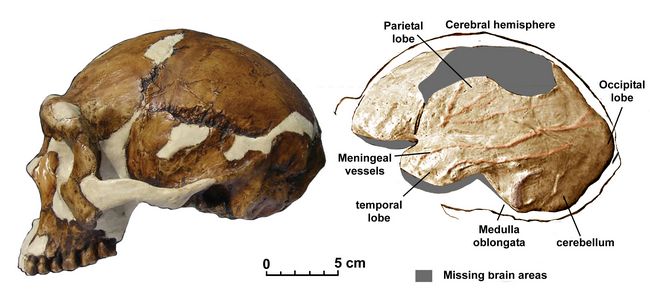Athena Review Image Archive ™
Homo erectus Zhoukoudian skull and brain endocast

Skull, and brain endocast of Zhoukoudian ZKD V (after Hu et al.2010 fig.2)
Zhoukoudian ZKD V is a fossil cranium of the Chinese Homo erectus known as Peking Man. The cranial capacity is estimated by Wu et al. (2010) to be 1140 cubic centimenters (cc), based on the brain endocast (see figure). This compares with a range of 915 to 1225 cc for a total of six crania measured for the Peking Homo erectus specimens. The ZKD V cranium is dated between 500,000 and 400,000 years ago, possibly closer to 415,000 years ago according to Wu et al. (2010). The skull shown in this figure is more complete than that of ZKD V.
The
endocast, while missing some areas, clearly shows several of the main
lobes of the cerebral hemisphere, as well as grooves or vessels for
meningeal arteries found in the outer portion of the skull, which
supply it with blood.
Reference:
Hu et al. 2010
Copyright © 1996-2020 Rust Family Foundation (All Rights Reserved).